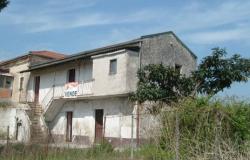The market is expected to cool down further in 2009, putting the market firmly in the hands of buyers who have funds immediately available and are prepared to move to best-value areas
Planning to buy a home in an Italian city? Over the next few months you may be able to find the best prices in ten years. The latest report on the property market in Italian cities, published by estate agents association FIAIP, shows a rise in supply, decline in sales volumes and slight dip in prices. All of which means the market is very firmly in the hands of (mobile) buyers with cash in hand.
After ten years’ continued growth, Italy’s urban market has slowed down, according to FIAIP. Throughout 2008, prices went down by 7% to 7.5% over last year. This is due to a decline in demand and a corresponding decrease in sales volumes of about 14%, while supply is on the rise. Sales times are getting longer, with peaks of up to nine months.
Urban outskirts recorded the biggest drop in activity, whereas the market for city centre homes, and, generally, prime properties remains steady.
“This is clearly a niche market. Prestige homes are not very many, so we believe this market will hold better than others,” explained FIAIP president Franco Arosio on Italian radio show Salvadanaio.
The market cooldown also has a precise geography, with big cities worse hit than smaller centres. However, Arosio told Salvadanaio listeners that “in big regional capital, this slowdown is now an established fact; in some provincial capitals we are already noting a regression, though slower; and in a few months we’ll have a homogeneous situation throughout the country.”
Asked whether he thinks that the property market may bounce back as a result of the financial crisis, which could bring investors back to bricks and mortar, Arosio replied: “We hope so—at the end of the 1990s, the property market gave way to the property market. With slightly different conditions, with less alarmism, we hope that the market will pick up again, if slowly, drawing investors’ attention.”
However, the forecast for 2009 is a further drop in transaction volumes (with the possible exception of city centre homes), while sale times will become even longer.
So why is this a potentially good time to buy? Because buyers who have cash immediately available are likely to get good value for their money, as vendors are increasingly ready to negotiate, and competition is minimal, as buyers who do not have funds in hand are finding it hard to get access to credit. So long as you are not planning on, or having to resell in the short term, you can bag a bargain and capitalise on it when the market grows strong again.
This is especially true for flexible purchasers who are prepared to move around the country in search of the best buys.
“Housing prices vary enormously from area to area,” pointed out during Salvadanaio Mario Breglia of property intelligence company Scenari Immobiliari. “What you pay for a garage in Rome fetches a three-bedroom apartment in Ragusa or Caltanisetta.
“One of the many elements that explains the crisis in Italian property demand is buyers’ scarce mobility,” he continued. “Differently from other European countries, not to mention America, the best part of Italian demand is for homes close to ‘mamma’s house’, making the market far too rigid. For example, on the outskirts of Milan, a resale home in good condition will not cost less than €4,000 per square metre. In nearby Piacenza and Novara, new homes cost €2,000-2,200 per square metre, which is definitely more affordable. Yet, movement towards these two cities—which, incidentally, are well connected with fast trains—is extremely modest compared to the market’s potential.”
For foreign buyers, who don’t have the problem of living close to mamma, this kind of informed flexibility opens up a chance for a very good buy.













